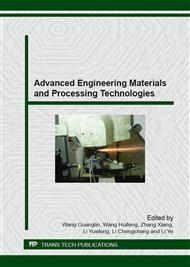p.142
p.149
p.155
p.162
p.168
p.173
p.181
p.187
p.194
The Influence of Welding Sequence on Welding Deformation of Sheet Metal Stamping
Abstract:
Connection process of welding has many characteristics, such as high efficiency, simple and low cost. The change of welding sequence makes the stress and welding deformation changed, so welding sequence has larger influences for welding deformation. The proper welding sequence is important to reduce the deformation of the workpiece, improve the process quality of the product, reduce the electrode wear, increase the service life of welding machine. This paper according to the zhengzhou Nissan C16 models under the left engine cabin wall welding assembly, by comparison, different welding sequence draws the conclusion: in the welding process of sheet metal, irregular alloy steel workpiece thin will appear in size and shape in the stamping process, especially the two or more than two pieces of sheet metal combined welding to be used welding sequence suitable to reduce the deformation and error in the process of welding. For the sheet metal parts of irregular shape, with the gap bending degree and joint surface big welding area is the first welding object, to fit a small gap region is the second welding object, then from the big regional joint gap to fit clearance small area welded, solder joints of welding can be uniformly distributed, according to the results of the analysis to formulate reasonable welding sequence, can provide a theoretical basis for the formulation of welding technology in actual production. Therefore, welding sequence is particularly important.
Info:
Periodical:
Pages:
168-172
Citation:
Online since:
October 2015
Authors:
Price:
Сopyright:
© 2016 Trans Tech Publications Ltd. All Rights Reserved
Share:
Citation:


